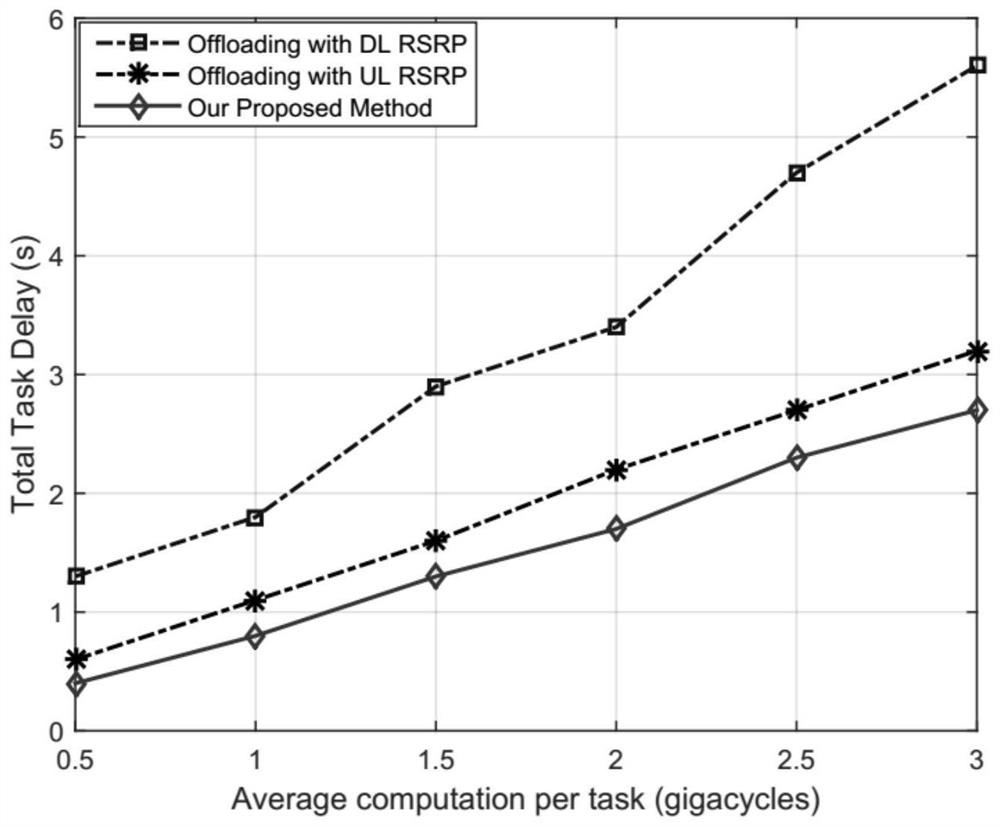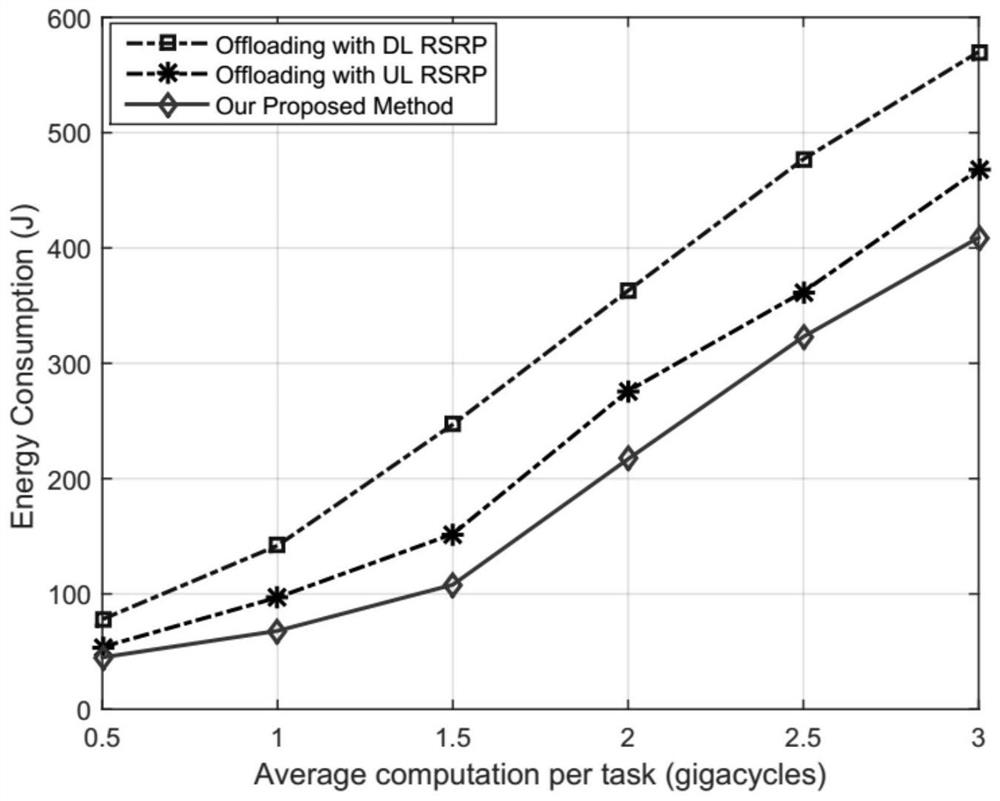An edge computing migration method for joint downlink and uplink in ultra-dense heterogeneous networks
A heterogeneous network and edge computing technology, applied in network traffic/resource management, advanced technology, climate sustainability, etc., can solve problems such as macro base station overload, micro base station underload, etc., to achieve optimal performance and minimize total delay Effect
- Summary
- Abstract
- Description
- Claims
- Application Information
AI Technical Summary
Problems solved by technology
Method used
Image
Examples
Embodiment Construction
[0056] The present invention will be further described below in conjunction with the accompanying drawings, but the present invention is not limited to the following embodiments.
[0057] An edge computing migration method for joint downlink and uplink in an ultra-dense heterogeneous network, comprising the following steps:
[0058] In a time division duplex (TDD, Time Division Duplexing) system of an ultra-dense heterogeneous network, multiple users are covered by macrocells and microcells. Suppose N={1,2,3...N}, M={1,2,3...M} and P=[1,2,3...P] represent the set of all users, the set of all macrocells and all microcells . Each user has a task that requires computing, and can access macrocells or microcells, but cannot access macrocells and picocells at the same time, and it is assumed that each task is minimal and indecomposable.
[0059] In order to provide users with edge computing services, the macro cell or micro cell has an edge computing server respectively. For each...
PUM
 Login to View More
Login to View More Abstract
Description
Claims
Application Information
 Login to View More
Login to View More - R&D
- Intellectual Property
- Life Sciences
- Materials
- Tech Scout
- Unparalleled Data Quality
- Higher Quality Content
- 60% Fewer Hallucinations
Browse by: Latest US Patents, China's latest patents, Technical Efficacy Thesaurus, Application Domain, Technology Topic, Popular Technical Reports.
© 2025 PatSnap. All rights reserved.Legal|Privacy policy|Modern Slavery Act Transparency Statement|Sitemap|About US| Contact US: help@patsnap.com



